13 SEO Basics You NEED To Know
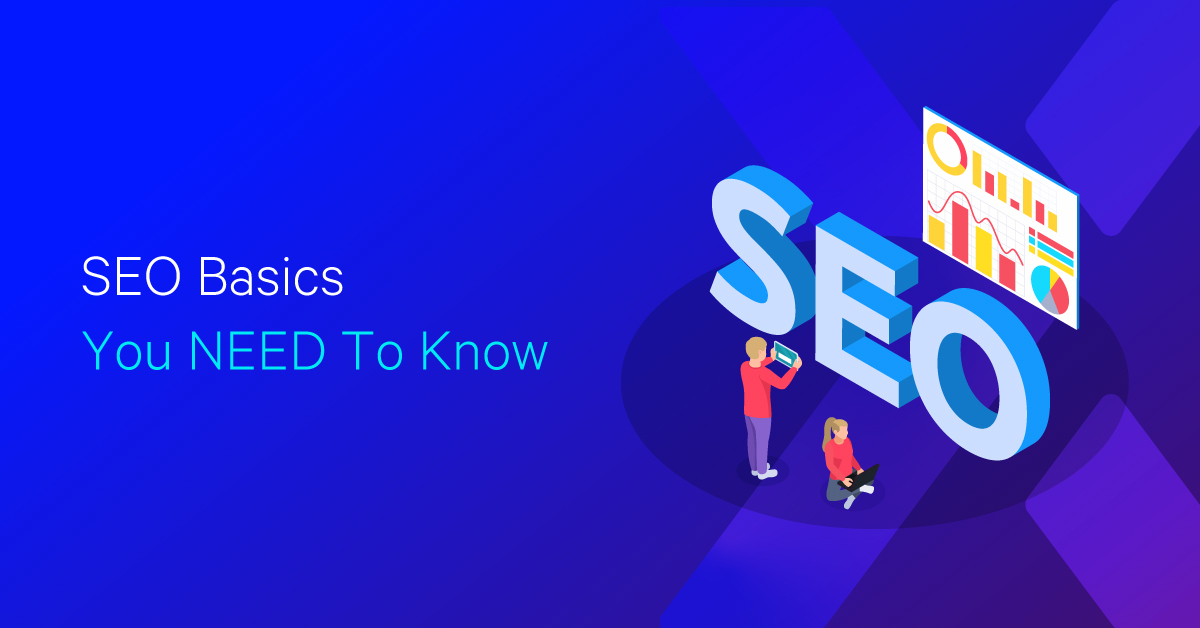
Hand off the toughest tasks in SEO, PPC, and content without compromising quality
Explore ServicesIn this article, you will learn the SEO basics you need to cover if you want to unlock more organic traffic.
For each of the basics below you will learn:
- What it is, and why it is important for SEO
- An actionable tactic you can use to improve it
- Additional resources for further learning
Let’s go.
13 SEO Basics You NEED To Know
Why are the basics important? 🤔
SEO is the practice of taking actions to increase a website’s or piece of content’s ranking on Google.
Not only is there a lot of traffic, but there is also a lot of very specific, high-intent traffic, which can be extremely powerful for a business.
Having an SEO strategy is essential because:
- Google seeks pages with high-quality, relevant information on the searcher’s query.
- It determines relevance by “crawling” (or reading) the content of your website and determining (algorithmically) whether that content is relevant to what the searcher is looking for, primarily based on the keywords it contains.
- It determines “quality” through a variety of means, the most prominent of which is the number and quality of other websites that link to your page and your site as a whole.
1. E-A-T
So, what is E-A-T and why is it important for SEO?
E-A-T is an abbreviation for expertise, authority, and trustworthiness.
It is derived from Google’s Search Quality Rater Guidelines, a 168-page document used by human quality raters to evaluate the quality of Google’s search results.
In 2013, Google published this document online to “assist webmasters and marketers in understanding what Google looks for in a web page.”
E-A-T is important for all queries, but it is more important for some than others.
Some pages or topics may have an impact on a person’s future safety, financial stability, happiness, or health. These are known as YMYL (Your Money or Your Life) topics according to Google. If your site is based on a YMYL theme, demonstrating EAT is critical.
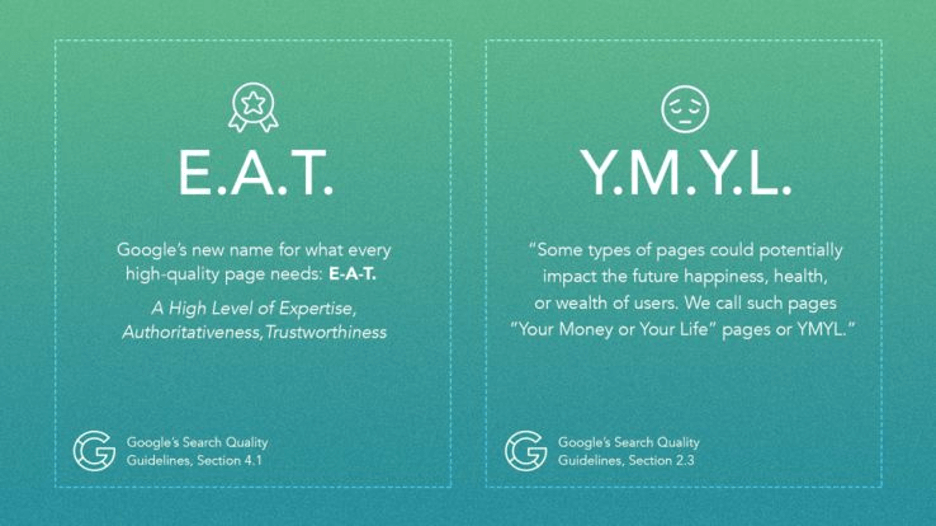
Source: https://moz.com/blog/google-e-a-t
How to improve E-A-T
Site-wide checks
- Display real company details?
- Have an About page with real people?
- Have a “Meet The Team” or equivalent page?
- Have a Privacy Policy page?
- Have a Cookie Policy/GDPR page?
- Have a Returns or Complaints page?
- Have client testimonials displayed?
- Have official accreditations displayed?
- Have awards won displayed?
- Have links from suitable authorities?
- Have links between your strongest related articles?
- Have non-aggressive advertising?
- Have unnecessary thin pages?
Content-checks
- Well written?
- Written by an expert?
- Reviewed and approved by an expert?
- Approved by an editor for grammatical errors?
- As short or long as the user’s need?
- Written with a strong purpose?
- Supported by multimedia?
- Easily accessible via mobile devices?
Author-checks
- Have an expertise in one primary subject area?
- Have a biography page?
- Mention your experience and qualifications in your biography?
- Have a link to your biography page on the content page?
- Have a short bio summary on the content where a profile page isn’t available?
- Link to your related websites or social media?
- Link to your published content on other authority websites?
- Have other websites which also mention your topical authority?
2. Title Tags
While Google is striving to better grasp the real meaning of a page and is de-emphasizing (and even penalizing) aggressive and manipulative keyword usage, having the term (and related phrases) that you want to rank for in your pages is still beneficial. And the title tag of your website is the single most important location to insert your keyword.
The title tag is not the major headline for your page. The page’s headline is generally an H1 (or occasionally an H2) HTML element. The title tag is seen at the top of your browser and is generated by your page’s source code in a meta tag:
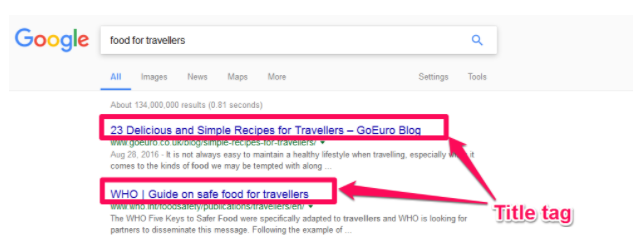
How to improve your page titles:
Go to Google Search Console > performance > filter the last 7 days.
Select “impressions” and “average CTR”
You might see something like this:
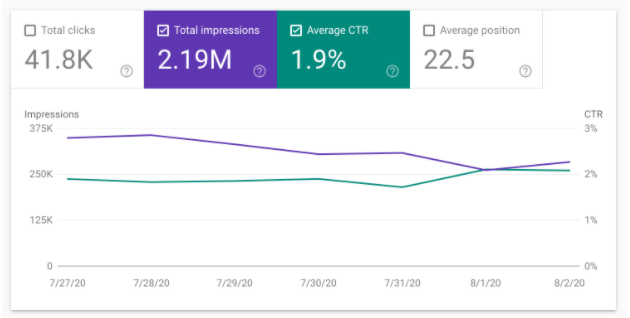
If you don’t have enough clicks, you might want to consider expanding your date range. I like the last 7 days because it gives you an accurate impression of your current CTR.
After you’re applied the filters, it’s time to export your data.

You should see something like this:
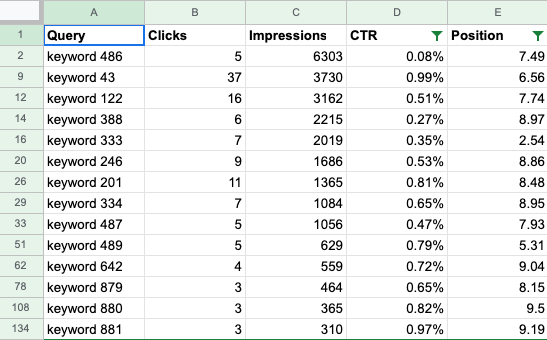
Now you’ll want to apply the following filters to the Queries tab:
- Impressions: Z – A
- CTR: less than or equal to 1%
- Position: less than of equal to 10
You can adjust these however you want. Especially if you’re not getting a lot of keywords. You’re basically looking for pages with high impressions and low CTR.
If you don’t know what a good CTR is, you can check out Ahrefs or go here.
You can also do this for the Pages tab.
So now you will want to isolate the pages ranking for that keyword and probably work to incorporate it into the title tag and meta description.
3. Meta Descriptions
While the title tag serves as the headline for your search listing, the meta description (another meta HTML element that may be modified in your site’s code but isn’t shown on your real page) serves as your site’s extra ad text.
Google takes some liberties with what appears in search results, so your meta description may not always appear, but if you have a captivating description of your page that would entice people looking to click, you may significantly improve traffic. (Keep in mind that appearing in search results is simply the first step! You must still attract searchers to your site and then persuade them to perform the desired action.)
Here’s an example of a real-life meta description (or probably the best SEO Agency ever 😉) that appears in search results:

4. URL
The URL structure of your site might be significant for tracking (you can more easily segment data in reports utilizing a segmented, logical URL structure) as well as shareability (shorter, descriptive URLs are easier to copy and paste and are less likely to be chopped off accidentally).
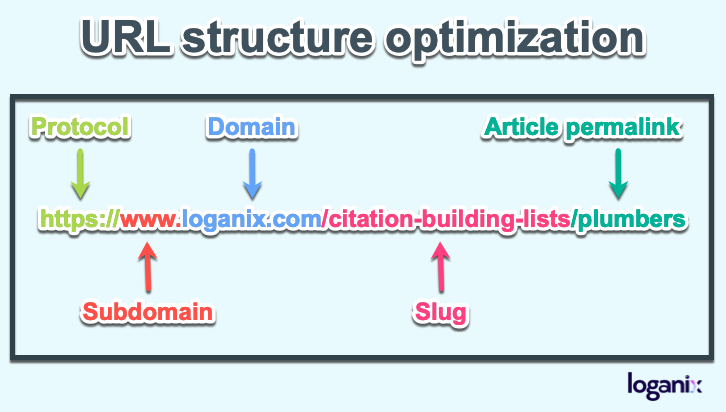
Again, don’t try to jam as many keywords as possible into your URL; instead, develop a short, informative URL.
Don’t modify your URLs to be more keyword-focused for “better SEO.” If you must modify your URL structure, utilize the correct (301 permanent) type of redirect. This is a typical error made by businesses while redesigning their websites.
5. Heading Tags (H1, H2, H3, etc)
Header tags are HTML elements that are used to identify headers on your website. The primary header tag, known as an H1, is generally designated for the page title. It appears as follows:
<h1>Title of Page/h1>
There are additional sub-headings ranging from H2 to H6, however, utilizing all of them on a page is not essential. In declining order of significance, the header tag hierarchy ranges from H1 to H6.
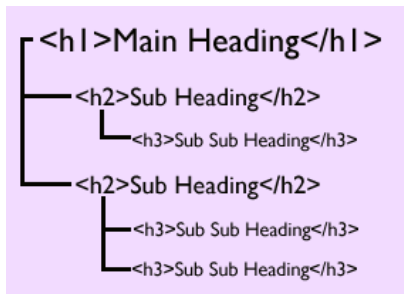
Each page should have a unique H1 that describes the primary topic of the page; this is usually generated automatically from the page title. The H1 should contain the page’s core keyword or phrase as the main descriptive title. Non-heading components, such as navigational buttons and phone numbers, should not be marked with header tags. Use header tags to introduce the topic of the following content.
Although what you write in your header tags might be utilized by search engines to analyze and rank your page, you should avoid exaggerating its significance.
Header tags are one of several on-page SEO elements that, in most cases, do not move the needle as much as quality backlinks and content, so while creating your headers, keep your site visitors in mind.
6. Alt tags (+ image optimization)
The way you mark up your pictures may affect not just how search engines view your website, but also how much search traffic your site receives from image searches.
An alt attribute is an HTML element that lets you give alternate information for an image if the viewer is unable to view it.
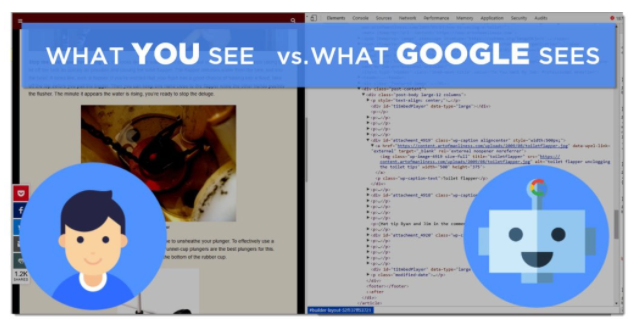
Because your photos may fail over time (files are destroyed, visitors are unable to connect to your site, etc.), providing a relevant description of the image might be beneficial from an overall usability standpoint. This also provides you with an additional chance – outside of your content – to assist search engines in understanding what your page is about.
7. Keywords
The first step in search engine optimization (SEO) is determining what you want to optimize for. This entails determining the terms people are looking for (also called “keywords”) for which you want your website to rank in search engines such as Google.

When deciding which keywords to target on your website, there are a few important aspects to consider:
- Search Volume – The first thing to examine is how many individuals (if any) are looking for a specific term. The greater the number of individuals looking for a term, the larger the audience you stand to reach. In contrast, if no one is searching for a term, there will be no audience to find your content through search.
- Competition – As with any company venture, you should examine the possible expenses as well as the chances of success in SEO. Understanding the relative competitiveness (and the possibility of ranking) for certain phrases is important for SEO.
- Relevance – It’s wonderful if a word is often searched for, but what if it’s not fully relevant to your prospects?
8. SEO Content
SEO content is internet content that is intended to rank high in search engines (like Google). Furthermore, SEO content is generally tailored around a certain term.
And, make no mistake, when it comes to search engine optimization, content is KING…
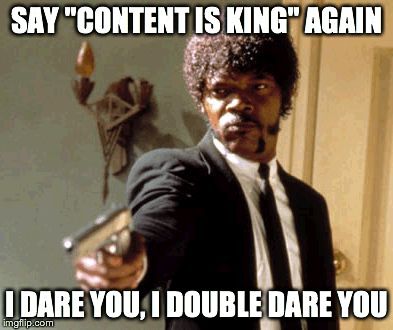
According to HubSpot, businesses that consistently produce blog articles receive 350% more traffic than those that do not generate content on a regular basis.
Google has even said that content is an extremely important component of SEO success. They specifically verified that “content” is one of Google’s top three ranking criteria.
To please both search engines (which will reward you with greater rankings over time) and potential customers and return visitors, you must offer value that extends beyond search engine optimization. In other words, avoid creating “thin” content that ranks and gets hits but provides little value to search engine users. Websites that promote “thin”, low-quality content run the danger of being penalized by Google; they also have high bounce rates and low conversion rates.
9. Internal linking
Internal linking is extremely important for SEO.
Many websites are so concerned with obtaining external links that they overlook the importance of internal links.

Internal links assist visitors to locate what they’re looking for, which improves their user experience. This means that even if they’ve dug deep into your back archive of blog entries, they can simply find their way back to your homepage via one of your internal links.
Internal links assist to keep visitors engaged with your website while also preventing them from leaving out of irritation. Internal links also make it easier for search engines to index your complete site.
10. Page speed
A slow-loading page might have a negative impact on your bounce rate. Most consumers have limited patience for pages that take too long to load and will abandon your website if their patience runs out.

Fast-loading sites are becoming increasingly important to search engines; the good news is that this is helpful not just to search engines, but also to your users and your site’s conversion rates.
You may use Google Developers’ PageSpeed tool to test the loading speed of your website. It will not only assess your site’s performance but will also provide ways for you to make your site quicker and enhance user experience.
11. Mobile-friendly site
If your site receives (or might get) substantial search engine traffic from mobile queries, the “mobile-friendliness” of your site will influence your results on mobile devices, which is a rapidly expanding category.

In some industries, mobile traffic already outnumbers desktop traffic..
12. XML sitemap
In this day and age of mobile-first indexing, is an XML sitemap still necessary for Google to discover your site’s URLs?
Yep.
In fact, according to a Google representative, XML sitemaps are the “second most significant source” for locating URLs.
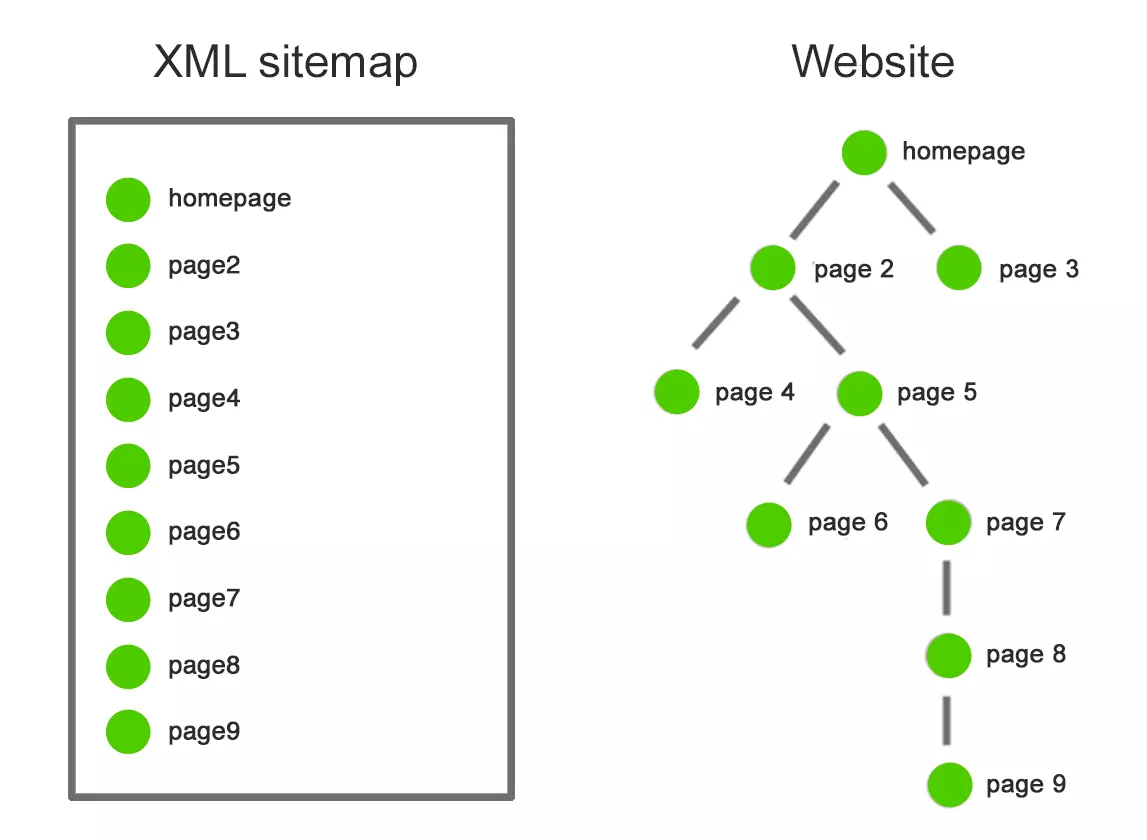
XML sitemaps can assist Google and Bing in understanding and finding all of your site’s content. Just be careful not to include useless sites in your sitemap, and keep in mind that submitting a page to a search engine in a sitemap does not guarantee that the page will rank for anything. There are several free programs available for creating XML sitemaps.
If you want to double-check that your sitemap is correct, go to the Search Console’s “Sitemaps” function. This will display the sitemap that Google is viewing for your website.
13. Robots.txt
Finally, with a robots.txt file, you may tell search engines how to treat certain content on your site (for example, if you don’t want them to scan a specific portion of your site).
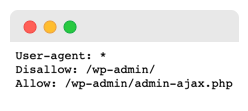
This file is probably already present on your site at yoursite.com/robots.txt. You should check to see if this file is currently preventing anything you want a search engine to find from being added to their index.
You can also use the robots file to prevent things like staging servers or swaths of thin or duplicate content that are valuable for internal use or customers from being indexed by search engines.
You may use the meta noindex and meta nofollow tags for similar purposes, albeit they work differently.
Summary
With this blog, we’ve covered a lot of ground . Hopefully by now your head is spinning with ideas on how you can improve the ranking and visibility of your website or business online.
If not, then I hope that at least one new idea has been presented that sparked an interest for further research into what makes up good SEO practices. Regardless of whether it was just one tip or all thirteen, if you put these things into practice, there’s no doubt they’ll help drive more traffic to your site.
Hand off the toughest tasks in SEO, PPC, and content without compromising quality
Explore ServicesWritten by Aaron Haynes on September 7, 2021
CEO and partner at Loganix, I believe in taking what you do best and sharing it with the world in the most transparent and powerful way possible. If I am not running the business, I am neck deep in client SEO.





